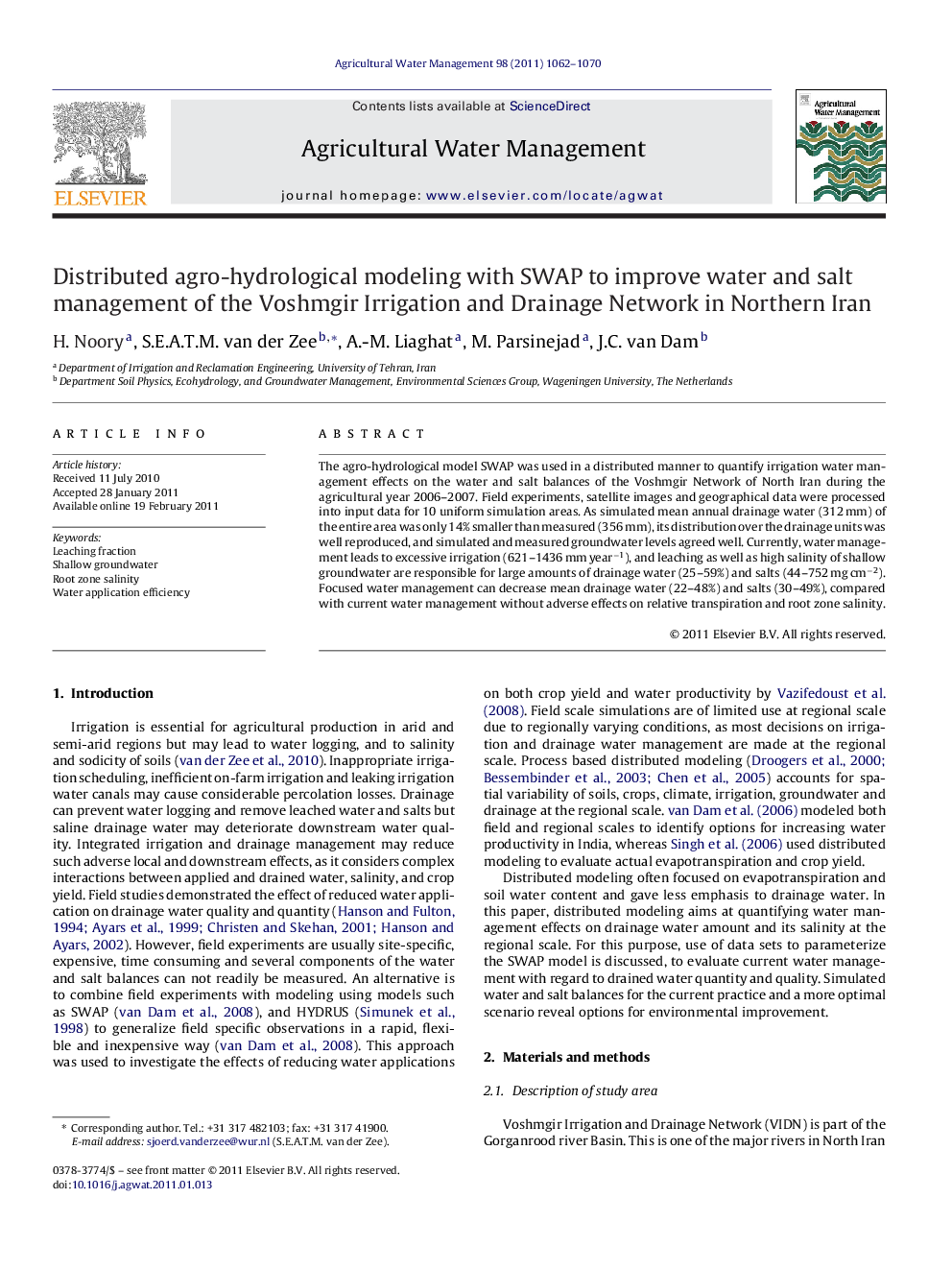| Article ID | Journal | Published Year | Pages | File Type |
|---|---|---|---|---|
| 4479377 | Agricultural Water Management | 2011 | 9 Pages |
The agro-hydrological model SWAP was used in a distributed manner to quantify irrigation water management effects on the water and salt balances of the Voshmgir Network of North Iran during the agricultural year 2006–2007. Field experiments, satellite images and geographical data were processed into input data for 10 uniform simulation areas. As simulated mean annual drainage water (312 mm) of the entire area was only 14% smaller than measured (356 mm), its distribution over the drainage units was well reproduced, and simulated and measured groundwater levels agreed well. Currently, water management leads to excessive irrigation (621–1436 mm year−1), and leaching as well as high salinity of shallow groundwater are responsible for large amounts of drainage water (25–59%) and salts (44–752 mg cm−2). Focused water management can decrease mean drainage water (22–48%) and salts (30–49%), compared with current water management without adverse effects on relative transpiration and root zone salinity.
Research highlights► Soil Water Atmosphere Plant (SWAP) modelling represents experimental data well. ► Water use in part of the management system is very inefficient. ► Water drainage is particularly large in cotton production. ► Modelling shows better water efficiency options without yield or salinity trade-off.
